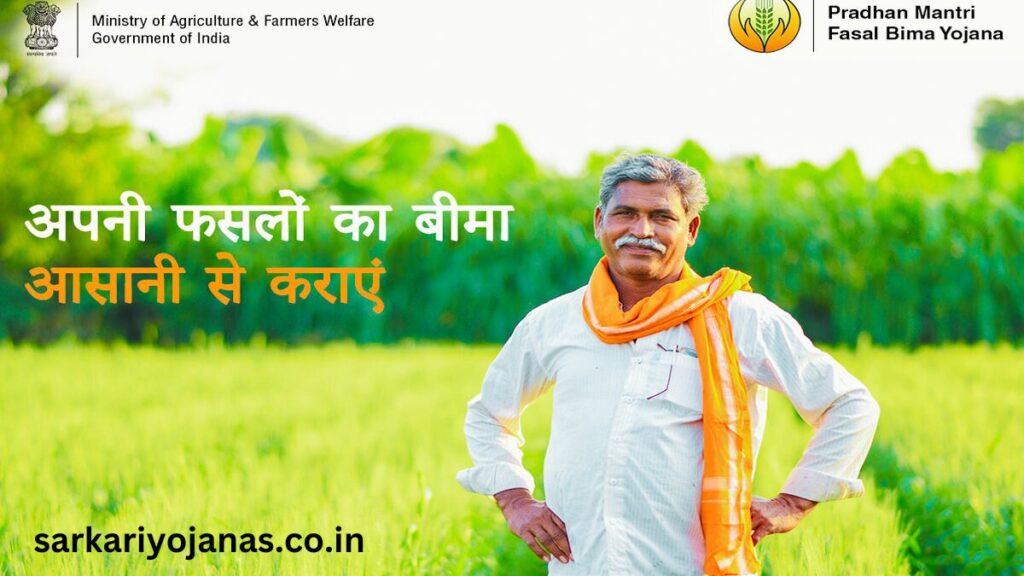Pradhan Mantri Fasal Bima Yojana (PMFBY) scheme was released in India with the Ministry of Agriculture & Farmers Welfare Resource, New Delhi, from the Kharif 2016 season onwards. National Insurance Company began taking part in PMFBY from Rabi 2016 ahead. It mainly blanketed 8 States and more than one Union Territories at a few degrees inside the beyond five seasons, Rabi 2016-17, Kharif & Rabi 2017, and Kharif & Rabi 2018, which overlays 70,27,637 farmers. Farmers’ share of top magnificence is Rs. 453 crores, and with subsidy from State/Central Govts RS.1909 Crores, gross Premium is Rs.2362 Crores for the five seasons collectively. While the claims of Kharif 18 and Rabi 18 are beneath technique, we’ve closed the primary three seasons with a gross pinnacle rate quantity of Rs.1804 Crores collected from 35,22,616 farmers and claims to the music of Rs.1703 crores had been paid, using which 17, sixty-six,455 no of farmers benefited, which indicates almost 50% of the farmers insured have been satisfied.
Revised Operational Guidelines issued by the Ministry of Agriculture & Farmers Welfare, New Delhi, are binding on all the stakeholders and offer an entire perception of the Scheme.
The same may be downloaded from www.Pmfby.Gov.In.
Read also: PM Suryoday Yojana Application Form, Eligibility Criteria and Benefits.
1. There are Two Schemes below the stated operational Guidelines.
1. Pradhan Mantri Fasal Bima Yojana (PMFBY) – I elaborated properly right here underneath.
2. Revised Weather Based Crop Insurance Scheme (RWBCIS) – Please search for advice from the pm by net web page for statistics
2. Objective of the Schemes
Pradhan Mantri Fasal BimaYojana (PMFBY) is interested in assisting sustainable manufacturing in the agriculture sector by way of using way of
- Providing monetary help to farmers struggling with crop loss/damage bobbing up out of surprising events
- Stabilizing the profits of farmers to ensure their continuance in farming
- Encouraging farmers to undertake contemporary and present-day agricultural practices
- You are guaranteeing the glide of credit to the agriculture quarter so you can contribute to food safety, crop diversification, and improving the increase and competitiveness of the agriculture area, except for defensive farmers from production risks.

3. Who can be protected?
All farmers who’ve been sanctioned Seasonal Agricultural Operations (SAO) loans (Crop Loans) from Financial Institutions (FIs), i.E. loanee farmers, for the notified crop(s) season can be protected compulsorily.
The Scheme is optional for non-loanee farmers.
- The coverage insurance will strictly be equivalent to the sum insured/hectare defined within the Govt. Notification and on the National Crop Insurance Portal multiplied via sown place for the notified crop.
4. How do you enrol the farmers in the Scheme?
Loanee and Non-Loanee farmers will be enrolled in the National Crop Insurance Portal(NCIP) belonging to the Ministry of Agriculture & Farmers Welfare, New Delhi. Banks that lend seasonal crop loans to farmers are accountable for adding the information to the NCIP.
In the case of Non-loanee farmers, Intermediaries, Common Service Centers (CSCs), and farmers on their personal and unique Agencies are to feature the data inside the NCIP, alongside facet the importing four documents mainly,………….
Premiums need to be paid using the manner of NEFT best, and DD or cheques are rare. Similarly, offline programs for enrollment are only sometimes as each software desires to be stuffed online.
- Coverage of Crops
- Food plants (Cereals, Millets and Pulses),
- Oilseeds/Annual Commercial / Annual Horticultural vegetation.
In addition, for perennial plants, pilots for coverage may be taken for the perennial horticultural vegetation for which widespread methodology for yield estimation is to be had.
5. Rate of Premium to be paid by the farmer to the Insurance Company
| Type of Crop | Kharif | Rabi |
| Food grains, including Cereals, Pulses and Oilseeds | 2% | 1.5 % |
| Annual Horticulture and Commercial Crops | 5% | |
After the Bidding gadget is finalized, if the top fee quoted with the Insurance Company’s resource is higher than the above costs, the difference could be paid to the Insurance Company via State & GOI at 50% in the form of top elegance subsidy. If such a price is much less than the above fees, no subsidy is payable to the Insurance Company.
6. Coverage of Risks and Exclusions beneath the PMFBY Scheme:
In the following stages of the crop, dangers leading to crop loss are blanketed under the Scheme. Addition of recent risks through the State Govt aside from the one cited below, with the aid of the State Govt. It isn’t permitted.
Prevented Sowing/Planting/Germination Risk: Insured vicinity is deterred from sowing / planting/germination due to deficit rainfall or unfavourable seasonal/weather conditions. 25% of the sum insured is paid, and the Policy may be terminated.
Standing Crop (Sowing to Harvesting): Comprehensive risk insurance is supplied to cover yield losses because of non-preventable risks. Drought, dry spells, floods, inundations, significant pests and disease attacks, landslides, fire for natural reasons, lightning, storms, hailstorms, and cyclones.
Post-Harvest Losses: Coverage is to be had best up to the most period of weeks from harvesting, for the ones crops which are required to be dried in reduce and spread / small bundled circumstance within the subject after harvesting in competition to unique perils of Hailstorm, Cyclone, Cyclonic rains and Unseasonal rains.
Localized Calamities: Loss/damage to notified insured crops resulting from the prevalence of identified localized dangers of Hailstorms, Landslides, Inundation, Cloud bursts and Natural fires because of lightning affecting isolated farms inside the notified region.
Add-on insurance for crop loss due to assault through the method of untamed animals: The States may additionally moreover bear in mind offering upload-on insurance for crop loss due to attack through wild animals wherever the threat is looked as if it might be sizable and is identifiable.
General Exclusions: Losses arising out of war and nuclear risks, malicious damage and distinct preventable dangers could be excluded.

7. How to intimate the claim?
| Risks Covered | Provision of Indemnity/Claim | Intimation of Loss |
| Prevented Sowing/ Planting / Germination Risk | Prevented from planting/germination (Area Based) sowing/ | Applicable on area-based approach. Individual farmers need not be intimate. Loss to be estimated by state government based on the proxy indicators, etc |
| Mid-Season Adversity | 25% of likely claims are ad-hoc payments. (Area Based) | |
| Post-Harvest Losses | Up to a maximum period of two weeks from harvesting for those crops which are required to be dried in cut and spread / minor bundled condition in the field after harvesting against specific perils of Hailstorm, Cyclone, Cyclonic rains and Unseasonal rains | Depending on individual insured farm levels, yield loss damage for localized calamities, and post-harvest losses will be assessed. Hence, lodging of loss information by farmers/designated agencies is essential. Intimation may be given within 72 hours by the farmer directly to the insurance company, concerned bank, local agriculture department, Govt. /district officials, through our toll-free number (1800 200 7710) or on the National Crop Insurance Portal. Additional 24 hours for the agency/department to register with the concerned insurance company |
| Localized Calamities | Loss/damage due to identified localized risks of Hailstorm, Landslides, Inundation, Cloud bursts and Natural fires due to lightening affecting isolated farms in the notified area |
Responsibility of the Farmers:
Timely Information/claim accommodations for harm to vegetation due to localized calamities and post-harvest losses.
To ensure that the insured crop is identical to the crop sown.
Change of insured vegetation: The trade can be informed to the KCC/ Crop-loan sanctioning economic group department right now but by two days before the cut-off date for the debit of pinnacle price/date of enrolment. This wants to be discovered with sowing certificates.
Read also: Vishwakarma Yojana Maharashtra.







